-
 Loyal to its Identity despite Adverse Circumstances
Loyal to its Identity despite Adverse Circumstances
The toughest moments experienced by FC Barcelona football club were the initial post-war years. The Club would not disappear without a fight. Subject to relentless repression and purges by the army and authorities, the identity of the organisation was changed completely.
The purges also affected the players; anyone who had gone on the tour to Mexico and the United States was suspended for two years.
Many of the players were exiled abroad. The Club’s coat of arms and name were changed because they were not deemed to be sufficiently Spanish, and the Club’s presidents were scrupulously selected by the sports authorities.
The team formation in subsequent years, however, led to more promising title victories in the 1950s.
For many people, Barça’s matches at Les Corts represented an oasis of freedom during years of fear, misery and repression.
-
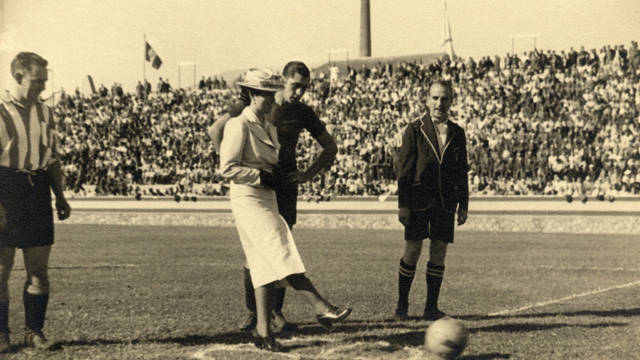 After the war, FC Barcelona experienced terrible times of social, economic and sporting hardships. The team did not have enough players and a bomb had destroyed the Club’s headquarters. It was time to start anew
After the war, FC Barcelona experienced terrible times of social, economic and sporting hardships. The team did not have enough players and a bomb had destroyed the Club’s headquarters. It was time to start anew
The new political dictatorship distrusted Barça, viewing it as an organisation that was committed to the Republican cause and Catalan nationalism.
The Les Corts grounds were officially reopened for a match on 29 June 1939. The match was presided over by various military and civil authorities. Speeches were given proclaiming that the Club would cease to be a vehicle for anti-Spanish sentiment and would become a Spanish sports icon under the new regime.
-
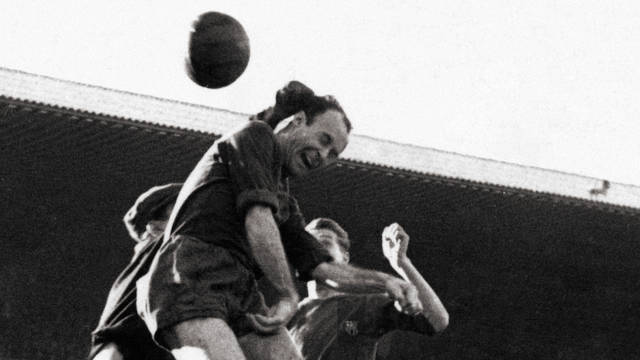 Once the upheaval of the war had been overcome, the team was strengthened with players who came to define that football era: César Rodríguez and Mariano Martín
Once the upheaval of the war had been overcome, the team was strengthened with players who came to define that football era: César Rodríguez and Mariano Martín
César was one of Barça’s greatest ever goalscorers. He played 433 official matches and scored 294 goals. He became famous for his goals from corners, which he often scored with diving headers.
Other players influenced the team’s success, like Basora, one of the best wingers Barça has ever had, and Ramallets, one of the most talented goalkeepers in the Club’s history.
-
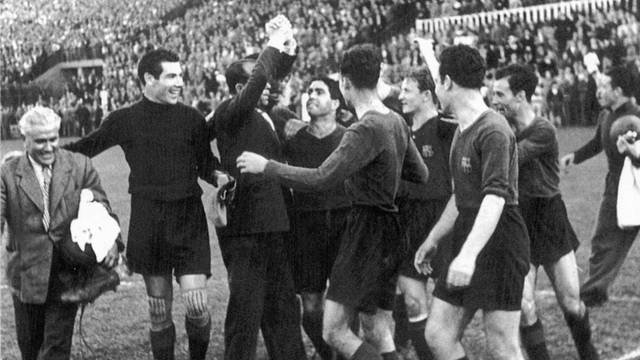 In 1944 Josep Samitier became Manager
In 1944 Josep Samitier became Manager
Josep Samitier’s contribution to Barça was not limited to his outstanding performance as a player. In 1944, he began an important stage as team manager.
With Samitier in charge, FC Barcelona won the 1944-45 Spanish League. It had not won the title since 1929.
-
 The 1948-49 season saw Barça win the Latin Cup, a competition organised by FIFA and the precursor to the European Cup
The 1948-49 season saw Barça win the Latin Cup, a competition organised by FIFA and the precursor to the European Cup
Finalist teams from France, Italy, Portugal and Spain played for the Cup. The participating teams were Stade de Reims, Torino and Sporting Clube de Portugal. FC Barcelona beat Sporting in the final with a 2-1 victory.
-
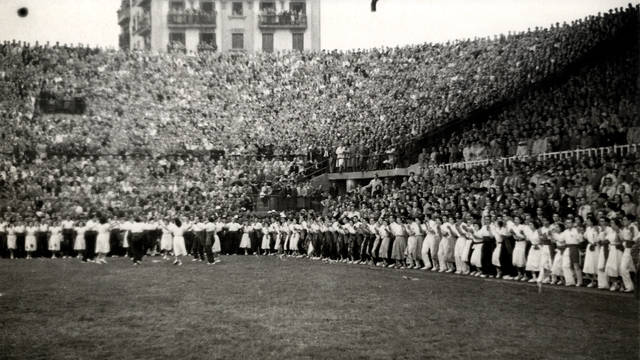 The Club’s 50th anniversary coincided with a time of great success, and the Club’s awareness that it had recovered from the Civil War. At this time, FC Barcelona underwent a period of growth, and had a total membership of 24,893
The Club’s 50th anniversary coincided with a time of great success, and the Club’s awareness that it had recovered from the Civil War. At this time, FC Barcelona underwent a period of growth, and had a total membership of 24,893
The Club’s foundation was commemorated with a series of events and a three-way football tournament, between Barça, Boldklub from Denmark and Palmeiras from Brazil. Barça won the tournament. Taking full advantage of this anniversary celebration, the Club reinstated the four stripes of the Catalan flag that it had been forced to remove from its coat of arms. This was a clear demonstration of its desire to recover its identity, despite the limitations imposed by the existing circumstances. The massive turnout of Barça followers at the celebratory events that took place at Les Corts made it clear that the Club had outgrown the legendary football grounds.
-
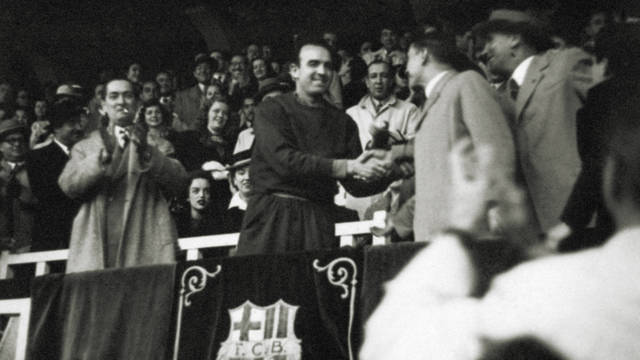 Enrique Fernández managed the team for three seasons
Enrique Fernández managed the team for three seasons
The Uruguayan Enrique Fernández, who had played for Barça before the war, managed the team for three seasons, which resulted in two consecutive Spanish League titles. Fernández used tactics based on attack, which were to the liking of Barça fans.
FCB
Search results
1940-1949 Years of Perseverance
Subscribe to:
Comments (Atom)
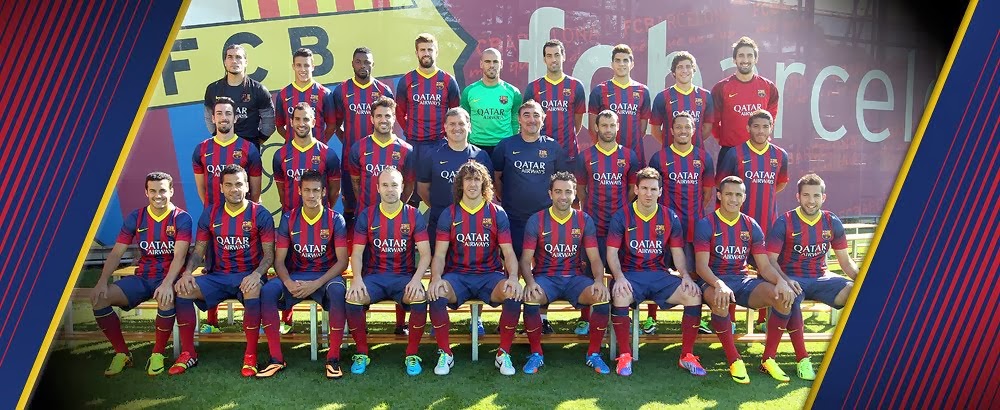
No comments:
Post a Comment